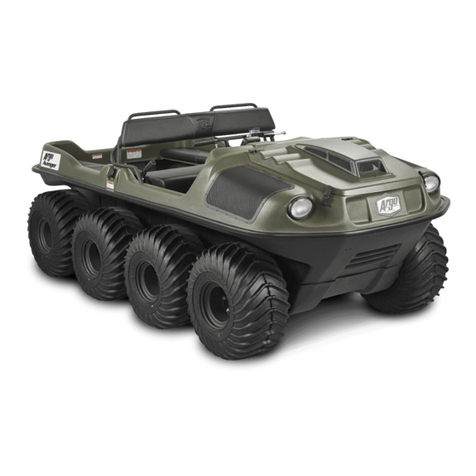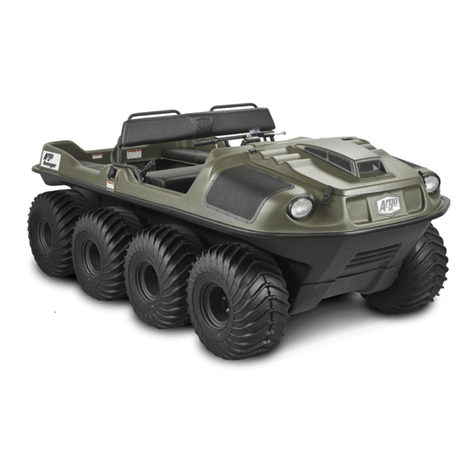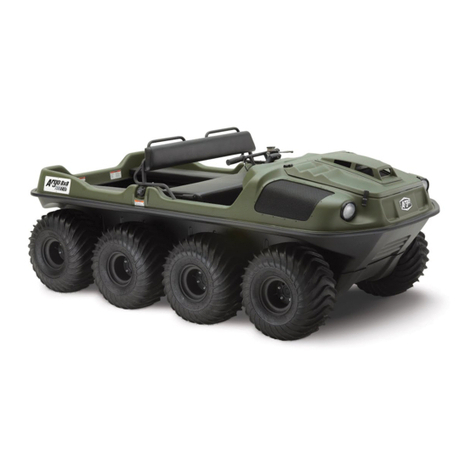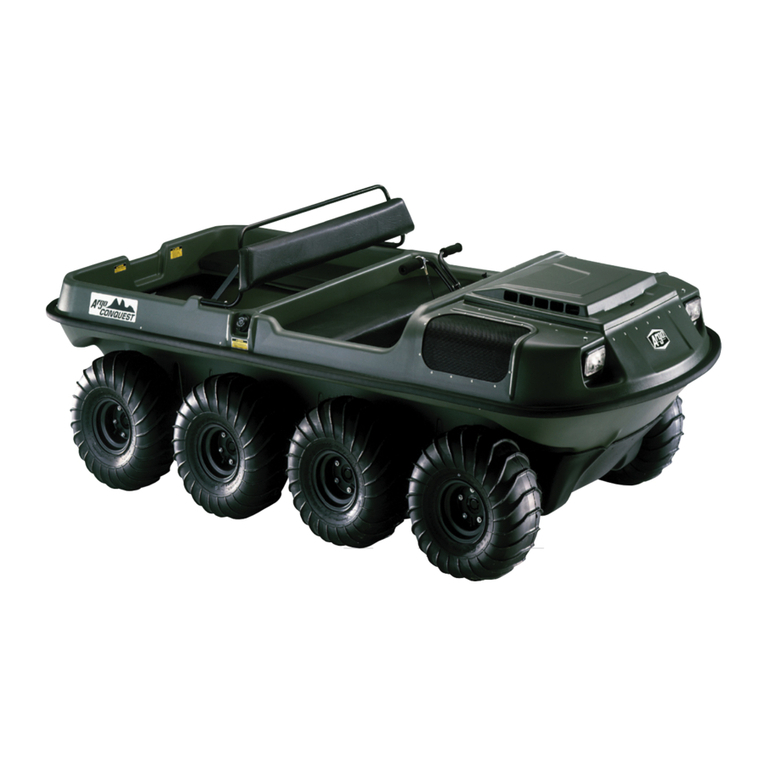
SECTION PAGE
TABLE OF CONTENTS
1.0 GENERAL INFORMATION
1.1 AMPHIBIOUS OPERATION .......................................................................................... 1
1.2 MAINTENANCE PROCEDURES .................................................................................. 1
1.3 WIND CHILL FACTOR .................................................................................................. 1
1.4 MODEL IDENTIFICATION............................................................................................ 1
1.4.1 Argo Vehicle Capacity ........................................................................................ 3
1.5 REAR SEATS - 8 WHEEL MODELS ............................................................................. 3
1.6 IDENTIFICATION AND LOCATION OF CONTROLS ................................................ 4
1.7 INFORMATION LABELS ............................................................................................... 5
2.0 GENERAL OPERATING INSTRUCTIONS
2.1 NEW VEHICLE “BREAK-IN” PROCEDURE ............................................................... 6
2.2 PRE-OPERATION CHECKS ........................................................................................... 6
2.3 CARRYING PASSENGERS AND CARGO .................................................................... 6
2.4 FUELING THE VEHICLE .............................................................................................. 7
2.5 VENTED FUEL SYSTEM - ALL MODELS .................................................................. 7
3.0 OPERATING INSTRUCTIONS
3.1 BRAKES AND STEERING ............................................................................................. 8
3.2 HOLDING BRAKE SYSTEM - Vanguard2, Bigfoot, Response & Conquest ................. 8
3.3 HOLDING BRAKE SYSTEM - Vanguard ...................................................................... 9
3.4 THROTTLE CONTROL .................................................................................................. 9
3.5 STARTING PROCEDURE .............................................................................................. 9
3.6 STOPPING THE ENGINE .............................................................................................. 10
3.7 MANUAL STARTING PROCEDURE ............................................................................ 10
3.8 SELECTING AND CHANGING TRANSMISSION GEARS ........................................ 10
3.8.1 Changing Transmission Gears ............................................................................ 11
3.9 HEADLIGHTS ................................................................................................................. 11
4.0 DRIVING PROCEDURES
4.1 DRIVING STRAIGHT AHEAD ...................................................................................... 12
4.2 STOPPING THE VEHICLE ............................................................................................ 12
4.3 TURNING THE VEHICLE ............................................................................................. 12
4.3.1 Left Turn ............................................................................................................. 12
4.3.2 Right Turn ........................................................................................................... 12
4.4 BACKING THE VEHICLE UP ....................................................................................... 12
4.4.1 Turning the Vehicle While Backing Up .............................................................. 12
5.0 DRIVING PROCEDURES DURING UNUSUAL CONDITIONS
5.1 REMOTE AREA USE ...................................................................................................... 13
5.2 ANGLE OF OPERATION................................................................................................ 13
5.3 UPHILL OPERATION ..................................................................................................... 13
5.4 DOWNHILL OPERATION .............................................................................................. 13
5.5 SIDE SLOPE OPERATION ............................................................................................. 14
5.6 AMPHIBIOUS OPERATION - GENERAL .................................................................... 14
5.6.1 Entering Water .................................................................................................... 15
5.6.2 Driving Procedures in Water .............................................................................. 15
5.6.3 Driving Out of Water .......................................................................................... 15
5.6.4 Outboard Motor Bracket .................................................................................... 15
5.7 WINTER OPERATION ................................................................................................... 16
5.7.1 Use on Ice Covered Bodies of Water ................................................................. 16
V

































